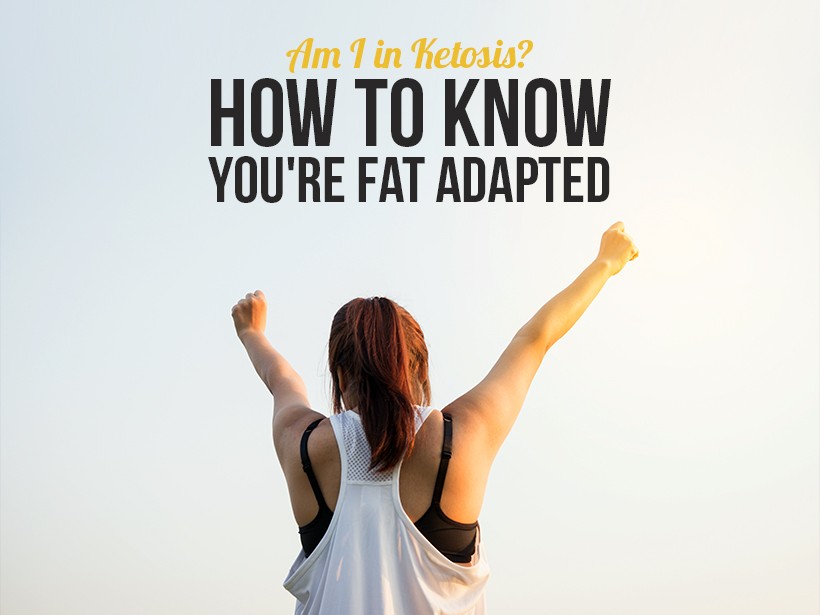When adopting a keto diet, the ultimate goal is to achieve the fat burning state of ketosis. In this state where our bodies no longer rely on carbohydrates, which are broken down into glucose for fuel, a metabolic shift occurs where we begin burning fat and producing ketone bodies as a source of energy.1
As the cornerstone of our physiological response to a deficit of carbohydrates, the presence of ketones in the body is a signal that you’ve hit that sweet state of ketosis. So how do you know you’re fat adapted?
Ketones in Blood or Urine
One of the most popular methods of determining if your body is fat adapted is to test your blood or urine for the presence of ketones. Urine test strips are available to detect ketones in your urine, and an increase in your ketone output can be a strong indicator you’ve entered ketosis. However, ketones present in urine are those that your body has determined are excess, and not an accurate reflection of the level of ketones in your body.
More accurately, ketone blood monitors test your blood for the presence of ketones and the specific levels of ketones presently in your body. While a more expensive investment up front, anyone serious about staying in tune with their body’s ketone levels should consider this the benchmark.
Fruity Smelling Breath
In a state of ketosis, many people describe a fruity, acetone type smell to their breath. Additionally, others report a metallic taste in their mouths that accompanies ketosis. While having odd smelling breath isn’t ideal, and commonly masked with a lot of sugar-free gum, it can be a clear sign you’re fat adapted.
Reduced Appetite
Using proteins and fats to satiate the body, and maintaining a steady insulin level, can cause our bodies to feel fuller for longer. If you find you’re not tempted to snack or you don’t feel hungry for 4-5 hours at a time, then this could be another clear indication you’re in ketosis.
Weight Loss
One of the greatest side effects of ketosis is watching that scale drop. It’s not uncommon to lose 4 – 7 pounds in the first 2 weeks of following a keto diet. Of course, this initial drop in weight isn’t fat just yet – when your insulin levels drop, your body releases a good deal of water that was held in your fat cells. Once that water is out of the way, stored fat is free to be used as fuel as long as you’re able to maintain ketosis.
It’s important to remember that ketosis doesn’t happen immediately. It can take some time for your body to switch into fat burning mode – so stay diligent and keep watch for these common symptoms.
NUTRITIONAL DISCLAIMER
The content on this website should not be taken as medical advice and you should ALWAYS consult with your doctor before starting any diet or exercise program. We provide nutritional data for our recipes as a courtesy to our readers. We use Total Keto Diet app software to calculate the nutrition and we remove fiber and sugar alcohols, like erythritol, from the total carbohydrate count to get to the net carb count, as they do not affect your blood glucose levels. You should independently calculate nutritional information on your own and not rely on our data. The website or content herein is not intended to cure, prevent, diagnose or treat any disease. This website shall not be liable for adverse reactions or any other outcome resulting from the use of recipes or recommendations on the Website or actions you take as a result. Any action you take is strictly at your own risk.
- Scottish Government: ‘Obesity Will Be One Of The Great Public Health Challenges Of Our Time’ - September 5, 2018
- Virta Health’s Use of Telemedicine to Treat Diabetics with Keto - September 3, 2018
- New MyProtein Nutrition Bar Disrupts Nutrition Standards - May 24, 2018




